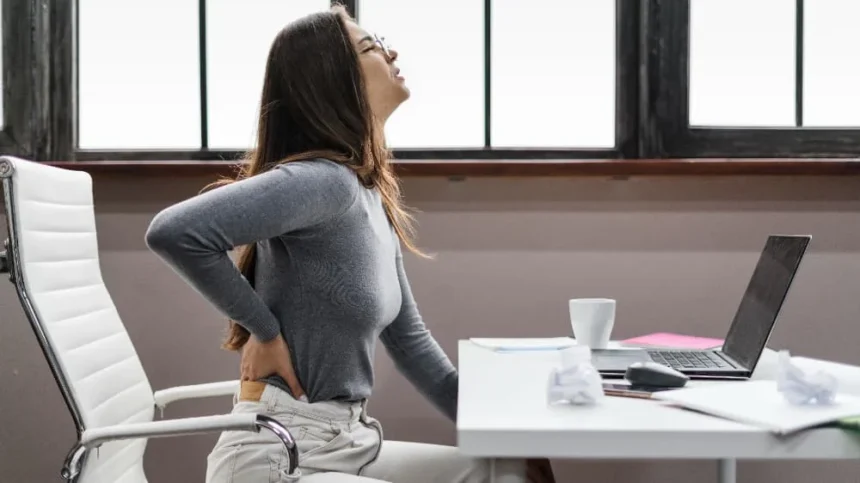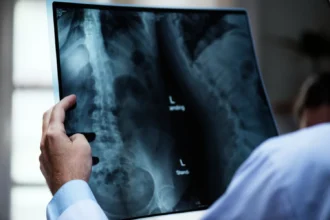Hip and low back pain can disrupt daily activities like walking, sitting, and even sleeping. If you’re struggling with stiffness, sharp pain, or aching discomfort, you’re not alone—millions of people experience these issues. The good news? Relief is possible. By understanding the causes, symptoms, and best treatment options, you can take control of your pain and get back to feeling your best.
What Does Hip and Lower Back Pain Feel Like?
Hip and lower back pain varies from person to person. It might be sharp and sudden or dull and persistent. Understanding where the pain occurs and how it feels can help determine the cause and best treatment.
Common Pain Locations
📌 Deep in the buttock → Often linked to sacroiliac (SI) joint issues, where the spine connects to the pelvis.
📌 Hip crease (groin area) → Usually related to problems with the hip joint itself.
📌 Lower back → May be caused by muscle strain, arthritis, or disc problems.
📌 Pain radiating down the leg → A key symptom of sciatica, where a nerve is compressed in the lower back.
Types of Pain
✔ Sharp or stabbing → Often due to sudden injury or movement.
✔ Dull and aching → Common in chronic conditions like arthritis.
✔ Burning or tingling → A sign of nerve involvement, such as a pinched nerve.
✔ Stiffness → More noticeable in the morning or after long periods of sitting.
How Hip and Back Pain Affects Daily Life
🤕 Difficulty bending or twisting → Tying shoes or picking up objects can be painful.
🪑 Sitting or standing for long periods → Can worsen stiffness and discomfort.
🚶 Walking or climbing stairs → May feel difficult or painful.
😴 Sleeping problems → Finding a comfortable position can be a challenge.
If these symptoms persist, seeking medical advice is crucial for proper treatment.
Common Causes of Lower Back and Hip Pain
Pain in the lower back and hips can have various causes, from muscle strain to nerve issues. Identifying the root cause is key to finding the right treatment.
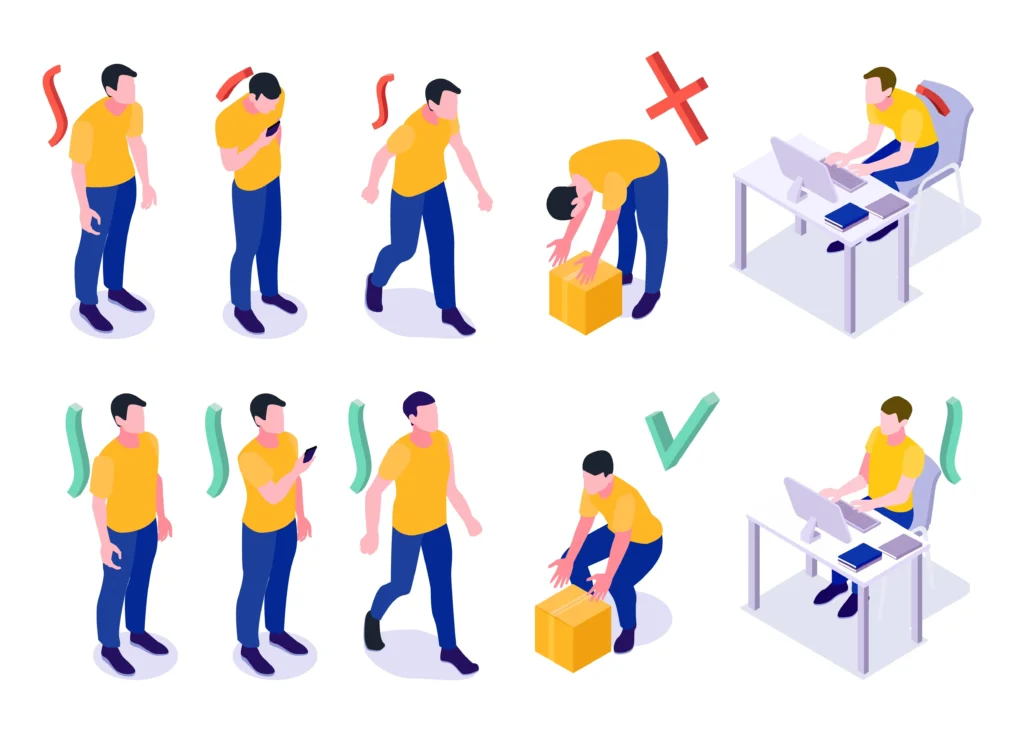
1. Muscle Strains and Sprains
Muscle strains happen when muscles are overstretched or torn, often from lifting heavy objects, sudden movements, or poor posture.
Symptoms of a muscle strain:
✔ Localized pain → Feels sore or tender to touch.
✔ Muscle spasms → Twitching or cramping in the affected area.
✔ Swelling or bruising → May indicate tissue damage.
✔ Limited range of motion → Moving the back or hip feels difficult.
2. Pinched Nerves (Sciatica)
A pinched nerve occurs when excess pressure compresses a nerve, causing pain, numbness, or tingling.
Symptoms of a pinched nerve:
✔ Radiating pain → Sharp pain running down the leg (common in sciatica).
✔ Numbness or tingling → Often felt in the buttocks, thighs, or feet.
✔ Leg weakness → Difficulty standing or walking.
3. Arthritis
Arthritis is joint inflammation that leads to pain, stiffness, and reduced mobility. The two most common types affecting the lower back and hips are:
✔ Osteoarthritis (OA) → Wear-and-tear damage over time.
✔ Rheumatoid arthritis (RA) → An autoimmune condition causing joint inflammation.
4. Herniated Disc
The spinal discs cushion the vertebrae, but when one bulges or ruptures, it can press on nerves, causing pain.
Symptoms of a herniated disc:
✔ Lower back pain that worsens with movement.
✔ Pain radiating into the hip or leg.
✔ Numbness, tingling, or muscle weakness.
5. Sacroiliac (SI) Joint Dysfunction
The SI joint connects the spine to the pelvis. When inflamed or misaligned, it can cause sharp or aching pain in the lower back, hips, or buttocks.
When to See a Doctor
Most cases of lower back and hip pain get better with time and home care, but sometimes it’s important to see a doctor.
🚨 Seek medical attention if you experience:
✔ Severe pain after an injury.
✔ Loss of bowel or bladder control.
✔ Numbness in the groin.
✔ Leg weakness or difficulty walking.
✔ Pain that worsens at night.
✔ Unexplained weight loss with pain.
✔ Fever and back pain together.
How is Lower Back and Hip Pain Diagnosed?
Doctors use multiple methods to diagnose hip and back pain:
📌 Physical Exam → Checking posture, movement, and pain levels.
📌 X-rays → Detects arthritis or fractures.
📌 MRI scans → Reveals soft tissue damage, herniated discs, or nerve compression.
📌 Nerve Tests → Evaluates nerve function in the back and legs.
An accurate diagnosis ensures the most effective treatment plan.
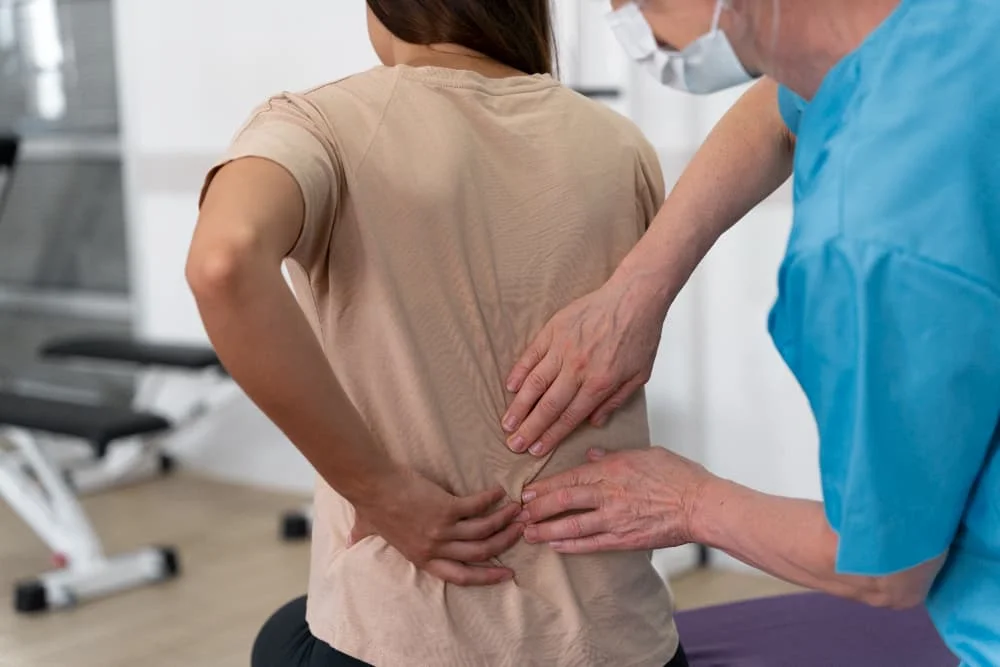
Treatment Options: Finding Relief from Hip and Back Pain
Once your doctor has figured out what’s causing your lower back and hip pain, they’ll work with you to create a treatment plan aimed at easing your discomfort and improving your quality of life. Here are some common approaches:
1. Medications for Pain Relief
✔ Over-the-counter pain relievers – Ibuprofen or acetaminophen help reduce inflammation.
✔ Muscle relaxants – Prescribed if muscle spasms are present.
2. Physical Therapy
A physical therapist can create a plan to:
✔ Strengthen core and hip muscles for support.
✔ Improve flexibility and posture.
✔ Reduce pain with targeted exercises.
3. Injections for Pain Relief
✔ Corticosteroid injections – Reduce inflammation in joints or pinched nerves.
✔ Nerve blocks – Temporarily block pain signals.
4. Surgery (If Necessary)
Surgery is a last resort for severe cases, such as:
✔ Herniated discs pressing on nerves.
✔ Severe arthritis requiring joint replacement.
It’s important to remember that everyone’s situation is different, and the best treatment plan will depend on the specific cause and severity of your pain. Your doctor will work with you to find the most effective approach to help you get back to feeling your best.
Self-Care and Home Remedies: Easing Your Pain at Home
While seeing a doctor is crucial for diagnosing and treating the underlying cause of your hip and back pain, there are plenty of things you can do at home to find relief and speed up your recovery.
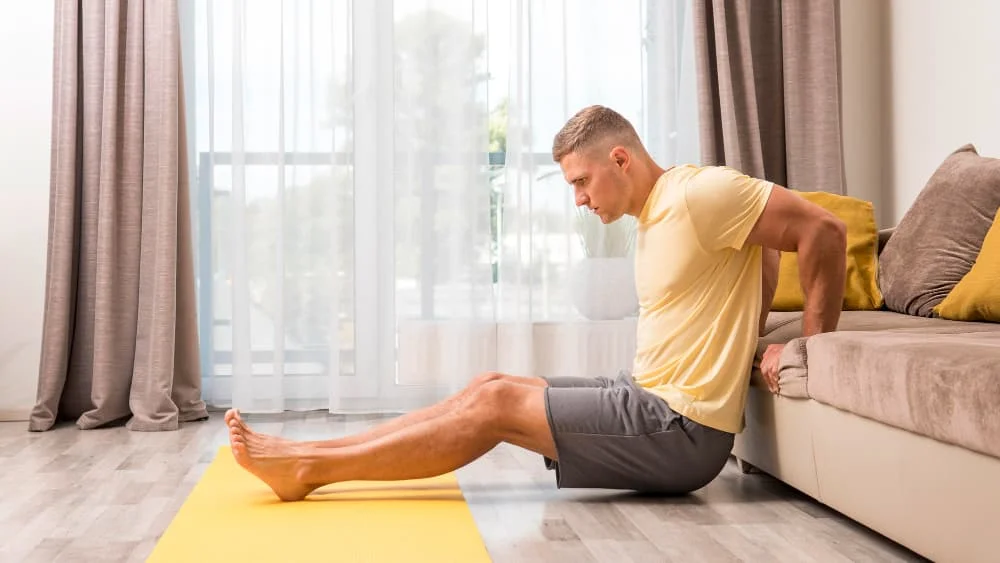
1. Heat and Ice Therapy
✔ Ice packs → Reduce swelling and numb pain (use for 15-20 minutes at a time).
✔ Heat therapy → Helps relax muscles and increase blood flow (use after the first few days of pain).
2. Stretching and Exercise
Gentle stretching and low-impact exercise can:
✔ Improve mobility and flexibility.
✔ Strengthen core and hip muscles.
✔ Reduce stiffness and tension.
Try: 🧘♀️ Yoga or Pilates
🚶♂️ Walking or swimming
🦵 Hip and lower back stretches
3. Maintain Good Posture
✔ Sit upright with lumbar support.
✔ Keep feet flat on the floor when sitting.
✔ Avoid slouching while standing or walking.
Remember, these self-care strategies are meant to complement, not replace, professional medical advice. If your pain is severe or doesn’t improve with home care, be sure to consult a doctor.
Preventing Hip and Low Back Pain
Proactive lifestyle changes can reduce future pain episodes:
✔ Stay active – Regular movement keeps muscles strong.
✔ Strengthen core muscles – A strong core supports the spine.
✔ Maintain a healthy weight – Reduces strain on joints.
✔ Use proper lifting techniques – Bend at the knees, not the waist.
✔ Stretch daily – Keeps muscles flexible and reduces stiffness.
Hip and lower back pain doesn’t have to control your life. With the right treatments, lifestyle changes, and self-care techniques, you can reduce pain, improve mobility, and get back to feeling your best.
If pain persists or worsens, consult a healthcare professional for a personalized treatment plan.

